Viennese apartment with pretend skylights by Alex Graef
British architect Alex Graef has combined two art deco apartments in Vienna to create a home with clean white walls, restored oak floors and a row of artificial skylights (+ slideshow).
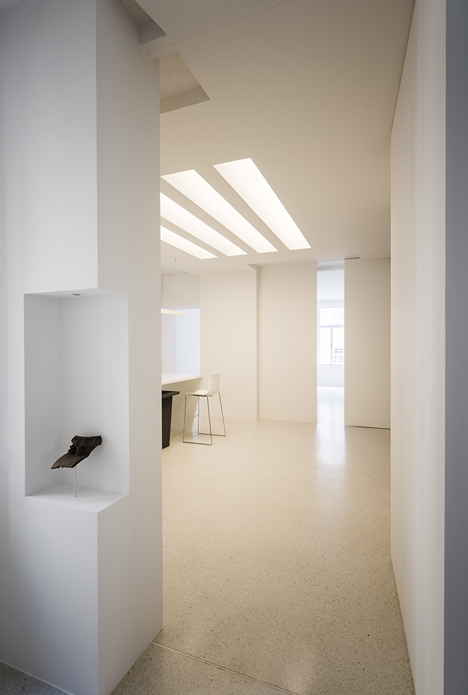
Alex Graef renovated the two nineteenth century apartments to create an occasional home for an art collector. The architect designed a series of bright spaces with large open walls and built-in shelves to create places for hanging paintings and displaying small sculptures.
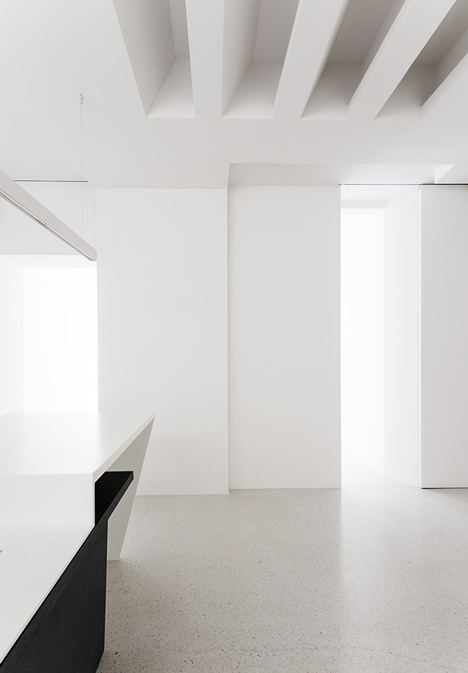
One side of the residence contains the bedroom, library and kitchen, while the other side accommodates the living room, dining room and study.

A series of pre-Columbian sculptures are dotted throughout the apartment to tie the spaces together and are highlighted by new lighting fixtures.
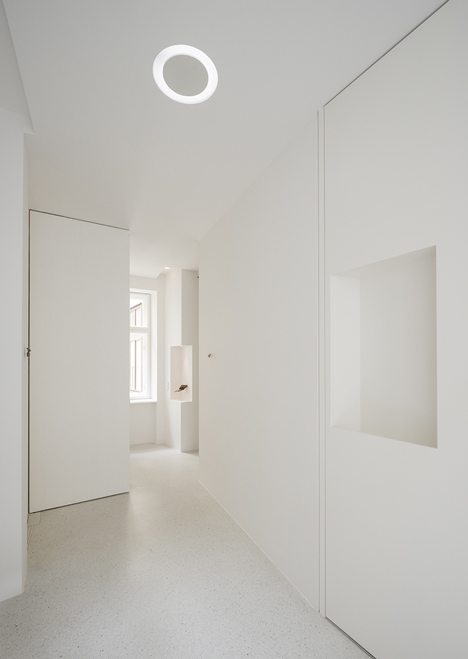
"A layer of directional spotlights highlight the sculptures, each of which is visible from another, and thereby directs the flow through the space," Graef told Dezeen.
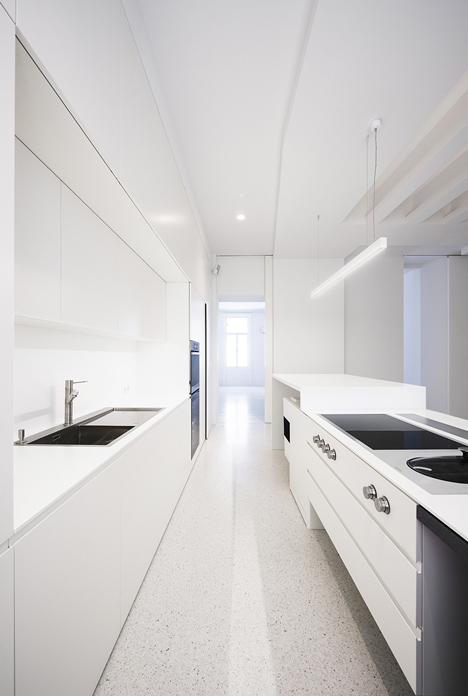
More lighting sits within three slices in the ceiling above the kitchen, creating the effect of a row of skylights.
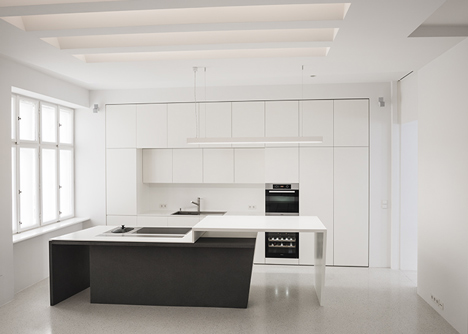
"The artificial skylights and deep-recessed dimmable ceiling spots provide basic uniform light levels to the space," added the architect.
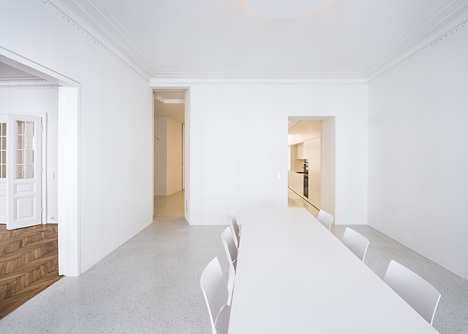
Original oak parquet floors were restored on one side of the apartment, while the other side features new terrazzo flooring.
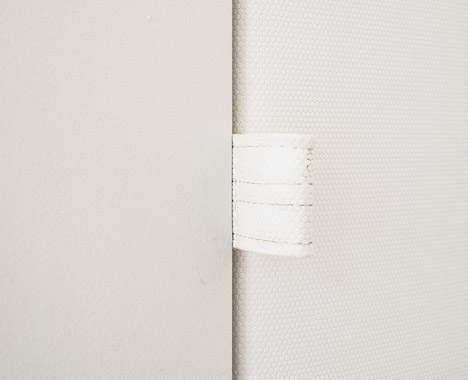
Sliding doors between rooms are upholstered in a textured white fabric.

The bathroom is contained behind newly added partitions and features dark tiled walls that contrast with the bright white of the rest of the residence.
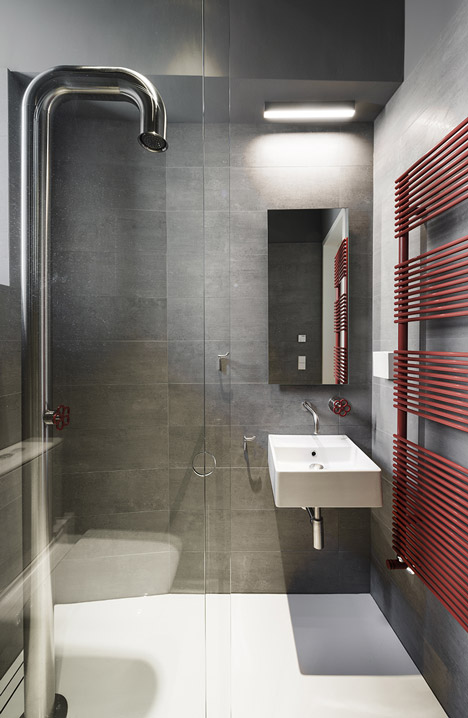
Photography is by Michael Nagl.
Here's a project description from the architect:
Beletage Apartment in Vienna
London architect Alex Graef remodelled and furnished a large apartment in a 19th century building in Vienna for a non-resident client.
A deep plan, created by combining two adjacent apartments, was unlocked by demolishing all central partitions and inserting a series of gently rotated volumes containing bathrooms and ancillary spaces. An existing collection of pre-columbian miniature sculptures was used as a narrative device and installed as permanent client to host their often absent occupiers.
This created fictional views and axial relationships, which helped to determine and communicate a geometry that meets and transports often sparse but ever changing daylight deep into a large central space.
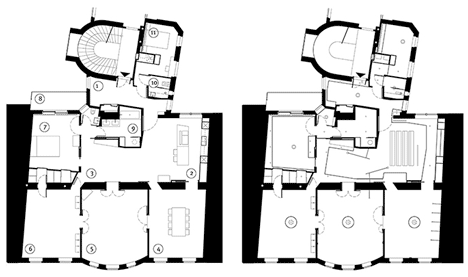
There it is met by a layered system of artificial lighting which looks to augment, complement and play, starting with a dominant central artificial skylight and using brightly lit wall faces and suspended lighting objects to mark moments and give structure to an otherwise free flowing spatial sequence.
The subtlety of light colour and intensity is enhanced by white as the dominant for all visible surfaces, helped by an interplay of different textures, reflections and refractions. Gaps between hard white volumes are filled by soft upholstered, white textured sliding doors, while inside surfaces of bathrooms and visible furniture use dark heavy materials and moments of bright colour.
Through large openings to an outer rim of existing rooms which are restored with their original wooden floors and traditional stucco, colour enters the white central space and further adds to its complexity and ever changing atmosphere.
Architects: Alex Graef Associated Architects Ltd (Alex Graef, Marek Dziubas, Christoph Eppacher, Natascha Madeiski, Heidi Lee, Thomas Dunning)
Consultant Engineers: Hollinsky and Partners, Vienna